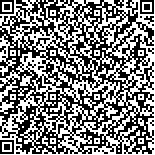王涛,郭铁成,朱晓临,张扬,张允健,孙圣刚,梅元武.重复经颅磁刺激治疗脑出血家兔的实验研究[J].中华物理医学与康复杂志,2003,(7):.-
扫码阅读全文

|
| 重复经颅磁刺激治疗脑出血家兔的实验研究 |
|
| |
| DOI: |
| 中文关键词: 经颅磁刺激 脑出血 细胞凋亡 细胞因子 家兔 |
| 英文关键词: Repetitive transcranial magnetic stimulation(rTMS) Cerebral hemorrhage Apoptosis Cytokine Rabbit |
| 基金项目: |
|
| 摘要点击次数: 5014 |
| 全文下载次数: 4870 |
| 中文摘要: |
| 目的探讨重复经颅磁刺激(rTMS)对脑出血家兔的治疗作用及其相关机制。 方法家兔36只,随机分为A、B、C组。A组(治疗组)和B组(模型组)采用家兔自体血注射制作脑出血模型,C组(对照组)注射生理盐水。A组家兔于造模后12 h开始实施rTMS,每日3次;B组和C组不进行rTMS。各组家兔分别于模型制作后12 h、24 h、48 h、72 h、1周、2周处死。采用TUNEL法和免疫组化技术,检测出血灶周围脑组织中细胞凋亡及bcl-2、TNF-α和IL-6的表达。 结果3组均未见自发性出血。C组未见凋亡细胞及bcl-2阳性表达;A组和B组均有凋亡细胞和bcl-2表达水平增高,2组相比,A组的凋亡细胞较少,bcl-2表达水平更高(P<0.05)。C组无TNF-α和IL-6阳性细胞;A组和B组均有TNF-α和IL-6表达,2组相比,A组的TNF-α表达水平较低,IL-6表达较高(P均<0.05)。 结论rTMS刺激可通过调控炎症因子表达、减轻炎性损伤以及上调bcl-2的表达、减少细胞凋亡,在脑出血中发挥治疗作用。 |
| 英文摘要: |
| Objective To observe the possible therapeutic effect of repetitive transcranial magnetic stimulation(rTMS) on cerebral hemorrhage in rabbits and explore the underlying mechanism. MethodsThirty-six rabbits were divided randomly into 3 groups, group A (receiving rTMS) and group B (no rTMS) were experimental groups, and group C was control group. The cerebral hemorrhage model was made by injection of self-body blood, and the control group was made by injection of saline. The rabbits in group A were treated with rTMS 3 times a day and those in the groups B and C without rTMS. Rabbits in all the 3 groups were sacrificed separately after 12, 24, 48, 72 hours and 1 and 2 weeks after the establishment of the model. TUNEL and immunohistochemistry methods were used to detect the apoptosis and the expressions of TNF-α, bcl-2 and IL-6 in the perihematomal brain tissues. Results No spontaneous intracerebral hemorrhage was observed in all of the 3 groups. Neither positive apoptotic cell and bcl-2 expression nor expressions of TNF-α and IL-6 was observed in group C. The apoptotic cells were found in both groups A and B, with less of the cells in group A than those in group B(P<0.05). The increased expressions of bcl-2, TNF-α and IL-6 were detected in both groups A and B. Compared to group B, the levels of bcl-2 and IL-6 were significantly higher in group A (P<0.05), and in contrast, the expressions of TNF-α was reduced to a significant extent in group A after rTMS (P<0.05). Conclusion rTMS could be beneficial for treating cerebral hemorrhage by regulating the expressions of the inflammatory cytokines such as TNF-α and IL-6, diminishing the inflammatory lesions, and reducing the apoptosis course by up-regulating the expression of bcl-2. |
|
查看全文
查看/发表评论 下载PDF阅读器 |
| 关闭 |
|
|
|